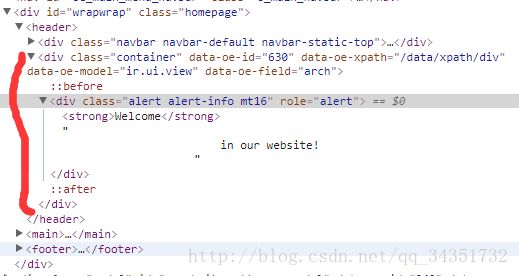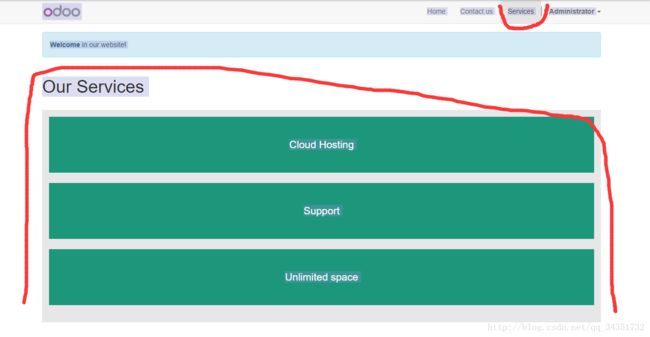- 【AI+智造】基于阿里云Ubuntu24.04系统,使用Ollama部署开源DeepSeek模型并集成到企业微信
邹工转型手札
Duodoo开源Odoo18开源企业信息化制造人工智能数据分析
作者:Odoo技术开发/资深信息化负责人日期:2025年2月28日本方案结合了本地部署与云服务调用的技术路径,涵盖部署步骤、集成逻辑及关键问题点,适用于企业级AI应用场景。一、方案背景与架构设计1.技术选型背景DeepSeek模型:作为开源大模型,支持文本生成、智能问答等场景,适合企业知识库与自动化服务。Ollama工具:轻量化本地模型部署框架,支持一键拉取模型镜像并启动API服务。企业微信集成:
- 【AI+智造】用DeepSeek支持设备温度、振动、速度、加速度量化数据的应用方案——以常州新能源动力电池制造企业为例
邹工转型手札
Duodoo开源企业信息化Odoo18开源人工智能制造数据分析
作者:Odoo技术开发/资深信息化负责人日期:2025年2月25日一、常州制造业特点与行业选择依据常州作为“中国新能源之都”,其制造业的核心竞争力体现在新能源产业链的垂直整合能力、智能化升级需求以及科创资源的集聚效应。2024年,常州新能源产业规模突破8500亿元,动力电池产业链完整度高达97%,产业集聚度全国第三,投资热度连续三年全国第一。以动力电池行业为例,其生产设备需高精度控制温度、振动、速
- 【AI+智造】基于DeepSeek的船舶海工设备多维度数据分析技术方案——以南通船舶制造企业为例
邹工转型手札
企业信息化Duodoo开源Odoo18开源人工智能制造数据分析
作者:Odoo技术开发/资深信息化负责人日期:2025年2月25日以下技术方案基于南通市制造业特点,结合船舶海工行业实际应用场景,针对设备数据量化分析需求展开论述。全文以技术可行性、行业适配性及实施路径为核心,深度整合区域产业特征与数字化技术解决方案。一、南通制造业特点与船舶海工行业背景1.南通制造业特征分析南通市作为长三角制造业重镇,已形成"传统产业+新兴产业+未来产业"的三级发展体系,2024
- 如何配置 PostgreSQL 允许远程连接 - 以 Odoo 数据库为例
m0_74823842
面试学习路线阿里巴巴数据库postgresql
如何配置PostgreSQL允许远程连接-以Odoo数据库为例问题背景在使用Odoo时,我们经常需要通过远程工具(如DataGrip、pgAdmin等)连接数据库进行管理和查询。然而,PostgreSQL默认只允许本地连接,需要进行适当的配置才能实现远程访问。本文将详细介绍如何配置PostgreSQL以允许远程连接。环境说明操作系统:Linux(Ubuntu/Debian)PostgreSQL版本
- 使用Odoo Shell卸载模块
odoo中国
odooodoo开源软件erp
使用OdooShell卸载模块我们在Odoo使用过程中,因为模块安装错误或者前端错误等导致odoo无法通过界面登录,这时候你可以使用OdooShell来卸载模块。OdooShell是一个交互式Pythonshell,允许你直接与Odoo数据库和模型进行交互。以下是使用OdooShell卸载模块的详细步骤:步骤1:启动OdooShell要启动OdooShell,你需要在终端中运行以下命令。确保你已经
- 数字化转型实战:Odoo+工业物联网技术破解江苏食品制造行业三大核心痛点
邹工转型手札
风吟九宵Duodoo开源企业信息化运维人工智能制造
行业背景与挑战江苏省作为中国食品工业产值前三强省份,拥有光明乳业、雨润食品等龙头企业及近2000家中小型食品制造企业。2023年江苏省食品工业协会调研显示:行业平均设备综合效率(OEE)仅为62.3%月度异常停机时间达42小时/产线质量追溯周期超过3.5小时库存周转天数高于行业标杆企业27%在实地调研南京某糕点生产企业时发现,其ERP系统与生产设备存在严重数据断层:车间主任需每天手工录入6类表单、
- 如何在 Odoo 18 中向聊天窗口(Chatter)添加自定义按钮
odoo中国
odooodoo开源软件pythonerp
如何在Odoo18中向聊天窗口(Chatter)添加自定义按钮在Odoo中,提升用户体验通常涉及对聊天窗口的定制——聊天窗口是针对特定记录进行交流和更新的集中平台。在聊天窗口中添加自定义按钮可以显著简化操作流程,使用户能够直接在界面中执行特定操作,例如触发工作流或生成报告。本文将指导您如何在Odoo18中向聊天窗口添加按钮,涵盖必要的步骤和代码片段,帮助您定制此功能以更好地满足业务需求并提高整体效
- 钢铁行业设备智能运维实战:基于DuodooBMS+SKF的减速机全生命周期管理方案
邹工转型手札
风吟九宵企业信息化Duodoo开源运维数据库人工智能制造开源
(导语:在钢铁行业"设备即产能"的竞争格局下,某大型钢铁集团通过DuodooBMS+SKFObseverPhoenixAPI系统实现核心设备预测性维护,热轧产线非计划停机减少42%,设备综合效率OEE提升17%)一、钢铁企业设备管理之痛某年产800万吨的钢铁联合企业热轧车间,12台关键减速机连续发生异常磨损事故:2023年Q1因1#摆剪减速机轴承失效导致非计划停机23小时,直接损失超200万元传统
- 基于Odoo的数据中台建设:助力企业数据驱动决策
邹工转型手札
风吟九宵Duodoo开源企业信息化人工智能开源制造
在数字化时代,数据已成为企业最宝贵的资产之一。数据中台作为企业数字化转型的核心,承担着整合数据资源、优化业务流程、提升决策效率的重要使命。Odoo作为全球领先的开源ERP系统,凭借其强大的数据整合与分析能力,正在成为企业构建数据中台的理想选择。一、数据中台的重要性数据中台是企业实现数据驱动决策的关键基础设施。它通过打破数据孤岛,整合来自不同业务系统的数据,为企业提供了一个统一的数据管理和分析平台。
- 开源ERP系统odoo的安装与配置
catmes
开源ERPpythonpostgresqlOpenERP
开源ERP系统odoo的安装与配置安装下载源码安装PostgreSQL安装Python3下载odoo依赖配置启动安装安装方式有两种:分发包安装:https://www.odoo.com/documentation/16.0/administration/install/packages.html源码安装:https://www.odoo.com/documentation/16.0/adminis
- 【DuodooBMS】基于Odoo的开源制造执行系统——以开源之力,驱动智能制造
邹工转型手札
Duodoo开源Odoo企业信息化开源制造人工智能
以用户为中心的开放式智造平台DuodooMES的设计始终围绕“用户可编程、生态可生长”的核心思想,打破传统工业软件的封闭性,让制造企业真正成为系统的“主人”:1.用户可编程:生产流程由你定义界面可配置:无需代码即可拖拽生成车间看板、报表模板,适配不同岗位的操作习惯(如质检员聚焦缺陷统计,班组长关注工单进度)。逻辑可编排:通过低代码工具自定义业务规则,例如“当设备温度超限时,自动触发停机指令并通知维
- 江苏地区电子制造行业首选的设备运行监测系统SKF IMAX-8边缘计算盒子与DuodooBMS实现高效预测性维护
邹工转型手札
Duodoo开源企业信息化开源开源人工智能制造
引言在电子制造行业中,设备高精度、高复杂度、高频率换线的生产特点对设备稳定性提出了严苛要求。传统维护方式依赖人工巡检和定期检修,存在响应滞后、成本高昂等问题。预测性维护(PredictiveMaintenance,PdM)通过实时数据分析和AI算法,能够提前识别设备潜在故障,大幅降低停机风险。然而,实现这一目标需要解决设备数据采集、边缘实时计算、平台深度融合等关键问题。本文将结合SKFIMAX-8
- 江苏地区纺织机械行业首选的设备运行监测系统基于SKF IMAX-8与开源DuodooBMS的纺织机械预测性维护全流程方案
邹工转型手札
Duodoo开源企业信息化开源开源制造人工智能
引言:工业设备维护的数字化转型挑战纺织机械行业面临高湿度、高粉尘、连续运行等严苛工况,传统定期维护模式存在效率低、成本高、故障响应滞后等问题。预测性维护(PdM)通过实时数据分析与AI模型预测设备健康状态,成为行业降本增效的关键路径。然而,如何实现从边缘数据采集到云平台分析的深度融合,仍是技术落地的难点。本文将结合SKFIMAX-8边缘计算盒子与开源DuodooBMS(基于Odoo的设备数采方案)
- 《手札·开源篇》Odoo系统与SKF Observer Phoenix API双向对接方案
邹工转型手札
企业信息化风吟九宵开源开源python制造
Odoo系统与SKFObserverPhoenixAPI双向对接方案一、方案设计概述(一)目标实现Odoo设备维护模块与SKFObserverPhoenix的传感器数据双向同步:Odoo→SKF:推送维护工单状态、设备档案信息。SKF→Odoo:同步设备传感器数据(振动、温度、转速等)和预测性维护建议。(二)技术架构Odoo端:使用XML-RPC/JSON-RPC接口对外暴露API,并通过自定义模
- 《手札·数转篇》开源Odoo软件与SKF Observer API钢铁厂双向集成方案
邹工转型手札
企业信息化风吟九宵Odoo开源python制造
一、项目背景在钢铁厂的生产环境中,设备的稳定运行、质量控制以及数据采集是确保生产效率和产品质量的关键。开源Odoo软件提供了强大的维护模块、质量模块和数据采集(数采)模块,结合SKFObserverAPI,可以实现设备状态监测、质量数据同步以及生产数据的实时采集与分析,从而提升钢铁厂的智能化管理水平。二、集成目标设备维护模块集成:通过Odoo维护模块与SKFObserverAPI对接,实时获取设备
- 《手札·行业篇》开源Odoo MES系统与SKF Observer Phoenix API双向对接方案
邹工转型手札
风吟九宵Odoo开源开源python制造
一、项目背景江苏省作为中国重要的制造业基地,钢铁行业在其中占据重要地位。随着工业4.0的推进,钢铁厂需要通过智能化手段提升生产效率、降低设备故障率、优化质量控制。开源OdooMES系统与SKFObserverPhoenixAPI的双向对接,能够实现设备状态监测、生产数据采集和质量控制的自动化与智能化,为江苏钢铁行业提供高效、透明的生产管理解决方案。二、集成目标设备状态监测:通过SKFObserve
- odoo qweb模板文件t-学习最新总结
信息化未来
odoo15owl学用笔记利用开源打造自己实用ERPpython
模板文件常用的-t意义Odoo中有相当多的视图,挂件等组件,在产品拥有个性化定制需求的时候,我们要修改某些widgets或者classes,那么就需要理解Odoo中前端框架的JS架构,并且掌握继承JS的方法。js要与xml配套来学,先看下模板中的标签(以"t-"开始)的意义,以利于快速理解学习。t-name用于指明模板的名称,t-call用于调用另外模板,后面带一个模板的名称t-extend用于指
- DeepSeek与Odoo融合,赋能企业智慧运营
odoo中国
人工智能odoo开源软件deeplearningpython
在数字化浪潮席卷全球的今天,企业不仅要应对日益复杂的市场环境,还需要不断提升内部管理效率。作为一款流行的开源ERP系统,Odoo已经在帮助企业优化资源配置、提高运营效率方面发挥了重要作用。但随着人工智能技术的快速发展,传统的业务处理模式已难以满足现代企业的需求。深度求索(DeepSeek)这样的前沿AI公司,凭借其强大的模型能力和丰富的行业经验,为企业提供了完善的人工智能解决方案。DeepSeek
- 《手札·开源篇》从开源到商业化:中小企业的低成本数字化转型路径 ——以Odoo为数据中台低成本实现售前售中一体化
OpenCoze开源扣子
CodeLychee风吟九宵开源开源
某机电设备有限公司数字化转型案例:以Odoo为数据中台实现售前售中一体化一、企业背景某机电设备有限公司在机电设备领域历经多年发展,业务广泛,涵盖工业自动化设备、电力设备等产品的销售与服务。随着业务版图不断拓展,企业面临着业务流程繁杂、数据分散等难题。公司此前采用金蝶ERP进行财务、生产等后端管理,利用纷享销客CRM进行客户关系及销售流程管理。但二者之间缺乏有效数据互通,致使售前到售中环节存在信息脱
- 《手札·开源篇》从开源到商业化:中小企业的低成本数字化转型路径 ——SKF轴承贸易商的十年信息化演进启示
OpenCoze开源扣子
CodeLychee风吟九宵开源开源
一、战略驱动的数字化演进逻辑在轴承行业利润持续走低的背景下,我们选择了一条"开源筑基-场景突破-数据驱动"的演进路径。从2013年金蝶EAS的基础供应链管理,到2023年实现车间设备全要素数字化,系统建设始终遵循"业务场景驱动、数据价值反哺"的核心原则。在Odoo开源ERP基础上,我们构建了涵盖CRM、WMS、MES的完整数字化链条,支撑企业年产值实现翻倍增长。二、双中台架构的实践路径业务中台化改
- 【零散技术】MAC 安装多版本node
Odoo穆尘
前端macos
时间是我们最宝贵的财富,珍惜手上的每个时分不同前端项目运行的node版本不一致,会导致无法运行,就像Odoo也需要依据版本使用对应的python环境。python可以用conda随时切换版本,那么Node可以吗?答案是肯定的。1、安装n(类似于conda的工具,单一字符还是很特别)npminstall-gn2、安装nodesudo-En14.21.3版本参照表Node.jsVersionRelea
- 【odoo】odoo基本视图中的kanban视图
种花的人_
odoopython
文章目录概要看板视图的基本特点:看板视图的工作流程:看板视图的优点:举个例子关键要素解析总结概要Odoo看板视图(KanbanView)是Odoo中的一种可视化视图,它通常用于管理任务、项目、销售机会、库存管理等业务流程。看板视图的设计灵感来源于“看板管理”方法,这种方法源于日本丰田汽车生产体系,它注重流程的可视化和任务的快速流转。通过看板视图,用户可以更直观地查看工作状态、追踪任务进度,并快速对
- 【odoo】odoo 公共方法的设计与实现
种花的人_
odoopython
Odoo公共方法的设计与实现1.功能需求2.seController类分析2.1res_ok方法:返回成功响应2.2res_err方法:返回错误响应2.3res_exception方法:捕获并返回异常2.4json_default方法:自定义JSON序列化2.5错误码字典error_code3.总结在Odoo开发中,我们常常需要编写一些通用的功能方法,这些方法可以帮助我们更高效地处理数据格式化、错
- 用ODOO11后,Odoo12令人期待的新特性
zzlyx99
Odoo12Odoo12
Odoo12版本有许多令人期待的改进,必将成为一个重要改进版本,以下是odoo12主要改进:1)物联网盒子(IoTBox)-IoTBox(IoT物联网)是一个数据收集网关,可以部署在生产环境中(例如,工艺路线某个节点上)收集数据并更新Odoo工单或者进行其他类似操作。2)报表设计器(OdooStudio内置)-有odoo实施经验的小伙伴都知道,odoo的基于XML的报表设计效率较低,需要很长时间开
- odoo 学习
卫玠_juncheng
python
环境问题psycopg2-binary==2.9.9python-ldap==3.4.0gevent==22.10.2环境问题。最后使用的是conda环境pythonodoo-bin-codoo.conf-ibase使用了conda环境执行命令:pythonodoo-bin-codoo.conf-ibase开发顺序打开视图添加菜单自定义表单自定义树自定义脚手架安装开发者模式进入开发者模式:?deb
- odoo 开源版/企业版/社区版的对比分析
lijianhua_9712
odooodoo
odoo的三个版本1开源版开发者odoo限制功能版本优点功能稳定,bug少缺点限制功能,进销存勉强可用2企业版开发者odoo中型企业功能优点功能稳定,bug少缺点授权费用昂贵3社区版开发者社区(1700余名专家)大型企业功能优点功能丰富,社区不受odoo公司控制,社区开发者基本都是资深erp技术专家,增加了大量细致功能缺点存在一些bug为什么用odoo社区版,不用odoo企业版呢1odoo企业版是
- ODOO不同版本与平台选择
chouchengyin2080
c#操作系统运维
1.10.0vs11.0vs8.0截至2017年底,最新的ODOO发布版为ODOO11.0,但功能上有一定精简(去除财务模块,去除工作流支持),技术上变动较大(代码逐步迁移至Python3,前端框架改写得抽象)。所以如果是从生产使用的角度来讲,ODOO10.0是当前最好选择,因为其更稳定,第三方模块也更多更全面。而如果是ODOO技术爱好从业者,则逐步迁移至ODOO11.0也有必要,因为其底层技术架
- 使用docker调试odoo
JackyBeauty
odoo14
使用VisualStudioCode(VSCode)的DevContainers进行Odoo开发和调试是一个高效的方法,尤其是当你希望在一个清洁且一致的开发环境中工作时。以下是设置和配置DevContainer以在Docker环境中单步调试Odoo系统的步骤:###步骤1:准备Docker环境确保你的机器上安装了Docker和VSCode。同时安装VSCode的“Remote-Containers
- odoo SyntaxWarning: invalid escape sequence ‘\w‘
信息化未来
odoo错误分析odoo17python开发语言
odooSyntaxWarning:invalidescapesequence'\w'在Python中,字符串中的反斜杠\是一个特殊字符,用于引入转义字符,比如\n表示换行,\t表示制表符等。当你在字符串中使用了\w,Python解释器会尝试将其识别为一个转义字符,但实际上\w并不是一个有效的Python转义字符,因此会引发SyntaxWarning:invalidescapese
- Odoo软件二次开发:Odoo支付与电子商务模块开发
kkchenjj
工业软件二次开发ERP开发工业软件ERP开发语言
Odoo软件二次开发:Odoo支付与电子商务模块开发Odoo环境搭建与配置安装Odoo框架在开始Odoo的二次开发之前,首先需要在一个支持的环境中安装Odoo框架。Odoo支持多种操作系统,包括Linux、Windows和macOS。本节将详细介绍如何在UbuntuLinux上安装Odoo。系统要求Ubuntu18.04LTS或更高版本Python3.6或更高版本PostgreSQL10或更高版本
- PHP,安卓,UI,java,linux视频教程合集
cocos2d-x小菜
javaUIlinuxPHPandroid
╔-----------------------------------╗┆
- zookeeper admin 笔记
braveCS
zookeeper
Required Software
1) JDK>=1.6
2)推荐使用ensemble的ZooKeeper(至少3台),并run on separate machines
3)在Yahoo!,zk配置在特定的RHEL boxes里,2个cpu,2G内存,80G硬盘
数据和日志目录
1)数据目录里的文件是zk节点的持久化备份,包括快照和事务日
- Spring配置多个连接池
easterfly
spring
项目中需要同时连接多个数据库的时候,如何才能在需要用到哪个数据库就连接哪个数据库呢?
Spring中有关于dataSource的配置:
<bean id="dataSource" class="com.mchange.v2.c3p0.ComboPooledDataSource"
&nb
- Mysql
171815164
mysql
例如,你想myuser使用mypassword从任何主机连接到mysql服务器的话。
GRANT ALL PRIVILEGES ON *.* TO 'myuser'@'%'IDENTIFIED BY 'mypassword' WI
TH GRANT OPTION;
如果你想允许用户myuser从ip为192.168.1.6的主机连接到mysql服务器,并使用mypassword作
- CommonDAO(公共/基础DAO)
g21121
DAO
好久没有更新博客了,最近一段时间工作比较忙,所以请见谅,无论你是爱看呢还是爱看呢还是爱看呢,总之或许对你有些帮助。
DAO(Data Access Object)是一个数据访问(顾名思义就是与数据库打交道)接口,DAO一般在业
- 直言有讳
永夜-极光
感悟随笔
1.转载地址:http://blog.csdn.net/jasonblog/article/details/10813313
精华:
“直言有讳”是阿里巴巴提倡的一种观念,而我在此之前并没有很深刻的认识。为什么呢?就好比是读书时候做阅读理解,我喜欢我自己的解读,并不喜欢老师给的意思。在这里也是。我自己坚持的原则是互相尊重,我觉得阿里巴巴很多价值观其实是基本的做人
- 安装CentOS 7 和Win 7后,Win7 引导丢失
随便小屋
centos
一般安装双系统的顺序是先装Win7,然后在安装CentOS,这样CentOS可以引导WIN 7启动。但安装CentOS7后,却找不到Win7 的引导,稍微修改一点东西即可。
一、首先具有root 的权限。
即进入Terminal后输入命令su,然后输入密码即可
二、利用vim编辑器打开/boot/grub2/grub.cfg文件进行修改
v
- Oracle备份与恢复案例
aijuans
oracle
Oracle备份与恢复案例
一. 理解什么是数据库恢复当我们使用一个数据库时,总希望数据库的内容是可靠的、正确的,但由于计算机系统的故障(硬件故障、软件故障、网络故障、进程故障和系统故障)影响数据库系统的操作,影响数据库中数据的正确性,甚至破坏数据库,使数据库中全部或部分数据丢失。因此当发生上述故障后,希望能重构这个完整的数据库,该处理称为数据库恢复。恢复过程大致可以分为复原(Restore)与
- JavaEE开源快速开发平台G4Studio v5.0发布
無為子
我非常高兴地宣布,今天我们最新的JavaEE开源快速开发平台G4Studio_V5.0版本已经正式发布。
访问G4Studio网站
http://www.g4it.org
2013-04-06 发布G4Studio_V5.0版本
功能新增
(1). 新增了调用Oracle存储过程返回游标,并将游标映射为Java List集合对象的标
- Oracle显示根据高考分数模拟录取
百合不是茶
PL/SQL编程oracle例子模拟高考录取学习交流
题目要求:
1,创建student表和result表
2,pl/sql对学生的成绩数据进行处理
3,处理的逻辑是根据每门专业课的最低分线和总分的最低分数线自动的将录取和落选
1,创建student表,和result表
学生信息表;
create table student(
student_id number primary key,--学生id
- 优秀的领导与差劲的领导
bijian1013
领导管理团队
责任
优秀的领导:优秀的领导总是对他所负责的项目担负起责任。如果项目不幸失败了,那么他知道该受责备的人是他自己,并且敢于承认错误。
差劲的领导:差劲的领导觉得这不是他的问题,因此他会想方设法证明是他的团队不行,或是将责任归咎于团队中他不喜欢的那几个成员身上。
努力工作
优秀的领导:团队领导应该是团队成员的榜样。至少,他应该与团队中的其他成员一样努力工作。这仅仅因为他
- js函数在浏览器下的兼容
Bill_chen
jquery浏览器IEDWRext
做前端开发的工程师,少不了要用FF进行测试,纯js函数在不同浏览器下,名称也可能不同。对于IE6和FF,取得下一结点的函数就不尽相同:
IE6:node.nextSibling,对于FF是不能识别的;
FF:node.nextElementSibling,对于IE是不能识别的;
兼容解决方式:var Div = node.nextSibl
- 【JVM四】老年代垃圾回收:吞吐量垃圾收集器(Throughput GC)
bit1129
垃圾回收
吞吐量与用户线程暂停时间
衡量垃圾回收算法优劣的指标有两个:
吞吐量越高,则算法越好
暂停时间越短,则算法越好
首先说明吞吐量和暂停时间的含义。
垃圾回收时,JVM会启动几个特定的GC线程来完成垃圾回收的任务,这些GC线程与应用的用户线程产生竞争关系,共同竞争处理器资源以及CPU的执行时间。GC线程不会对用户带来的任何价值,因此,好的GC应该占
- J2EE监听器和过滤器基础
白糖_
J2EE
Servlet程序由Servlet,Filter和Listener组成,其中监听器用来监听Servlet容器上下文。
监听器通常分三类:基于Servlet上下文的ServletContex监听,基于会话的HttpSession监听和基于请求的ServletRequest监听。
ServletContex监听器
ServletContex又叫application
- 博弈AngularJS讲义(16) - 提供者
boyitech
jsAngularJSapiAngularProvider
Angular框架提供了强大的依赖注入机制,这一切都是有注入器(injector)完成. 注入器会自动实例化服务组件和符合Angular API规则的特殊对象,例如控制器,指令,过滤器动画等。
那注入器怎么知道如何去创建这些特殊的对象呢? Angular提供了5种方式让注入器创建对象,其中最基础的方式就是提供者(provider), 其余四种方式(Value, Fac
- java-写一函数f(a,b),它带有两个字符串参数并返回一串字符,该字符串只包含在两个串中都有的并按照在a中的顺序。
bylijinnan
java
public class CommonSubSequence {
/**
* 题目:写一函数f(a,b),它带有两个字符串参数并返回一串字符,该字符串只包含在两个串中都有的并按照在a中的顺序。
* 写一个版本算法复杂度O(N^2)和一个O(N) 。
*
* O(N^2):对于a中的每个字符,遍历b中的每个字符,如果相同,则拷贝到新字符串中。
* O(
- sqlserver 2000 无法验证产品密钥
Chen.H
sqlwindowsSQL ServerMicrosoft
在 Service Pack 4 (SP 4), 是运行 Microsoft Windows Server 2003、 Microsoft Windows Storage Server 2003 或 Microsoft Windows 2000 服务器上您尝试安装 Microsoft SQL Server 2000 通过卷许可协议 (VLA) 媒体。 这样做, 收到以下错误信息CD KEY的 SQ
- [新概念武器]气象战争
comsci
气象战争的发动者必须是拥有发射深空航天器能力的国家或者组织....
原因如下:
地球上的气候变化和大气层中的云层涡旋场有密切的关系,而维持一个在大气层某个层次
- oracle 中 rollup、cube、grouping 使用详解
daizj
oraclegroupingrollupcube
oracle 中 rollup、cube、grouping 使用详解 -- 使用oracle 样例表演示 转自namesliu
-- 使用oracle 的样列库,演示 rollup, cube, grouping 的用法与使用场景
--- ROLLUP , 为了理解分组的成员数量,我增加了 分组的计数 COUNT(SAL)
- 技术资料汇总分享
Dead_knight
技术资料汇总 分享
本人汇总的技术资料,分享出来,希望对大家有用。
http://pan.baidu.com/s/1jGr56uE
资料主要包含:
Workflow->工作流相关理论、框架(OSWorkflow、JBPM、Activiti、fireflow...)
Security->java安全相关资料(SSL、SSO、SpringSecurity、Shiro、JAAS...)
Ser
- 初一下学期难记忆单词背诵第一课
dcj3sjt126com
englishword
could 能够
minute 分钟
Tuesday 星期二
February 二月
eighteenth 第十八
listen 听
careful 小心的,仔细的
short 短的
heavy 重的
empty 空的
certainly 当然
carry 携带;搬运
tape 磁带
basket 蓝子
bottle 瓶
juice 汁,果汁
head 头;头部
- 截取视图的图片, 然后分享出去
dcj3sjt126com
OSObjective-C
OS 7 has a new method that allows you to draw a view hierarchy into the current graphics context. This can be used to get an UIImage very fast.
I implemented a category method on UIView to get the vi
- MySql重置密码
fanxiaolong
MySql重置密码
方法一:
在my.ini的[mysqld]字段加入:
skip-grant-tables
重启mysql服务,这时的mysql不需要密码即可登录数据库
然后进入mysql
mysql>use mysql;
mysql>更新 user set password=password('新密码') WHERE User='root';
mysq
- Ehcache(03)——Ehcache中储存缓存的方式
234390216
ehcacheMemoryStoreDiskStore存储驱除策略
Ehcache中储存缓存的方式
目录
1 堆内存(MemoryStore)
1.1 指定可用内存
1.2 驱除策略
1.3 元素过期
2 &nbs
- spring mvc中的@propertysource
jackyrong
spring mvc
在spring mvc中,在配置文件中的东西,可以在java代码中通过注解进行读取了:
@PropertySource 在spring 3.1中开始引入
比如有配置文件
config.properties
mongodb.url=1.2.3.4
mongodb.db=hello
则代码中
@PropertySource(&
- 重学单例模式
lanqiu17
单例Singleton模式
最近在重新学习设计模式,感觉对模式理解更加深刻。觉得有必要记下来。
第一个学的就是单例模式,单例模式估计是最好理解的模式了。它的作用就是防止外部创建实例,保证只有一个实例。
单例模式的常用实现方式有两种,就人们熟知的饱汉式与饥汉式,具体就不多说了。这里说下其他的实现方式
静态内部类方式:
package test.pattern.singleton.statics;
publ
- .NET开源核心运行时,且行且珍惜
netcome
java.net开源
背景
2014年11月12日,ASP.NET之父、微软云计算与企业级产品工程部执行副总裁Scott Guthrie,在Connect全球开发者在线会议上宣布,微软将开源全部.NET核心运行时,并将.NET 扩展为可在 Linux 和 Mac OS 平台上运行。.NET核心运行时将基于MIT开源许可协议发布,其中将包括执行.NET代码所需的一切项目——CLR、JIT编译器、垃圾收集器(GC)和核心
- 使用oscahe缓存技术减少与数据库的频繁交互
Everyday都不同
Web高并发oscahe缓存
此前一直不知道缓存的具体实现,只知道是把数据存储在内存中,以便下次直接从内存中读取。对于缓存的使用也没有概念,觉得缓存技术是一个比较”神秘陌生“的领域。但最近要用到缓存技术,发现还是很有必要一探究竟的。
缓存技术使用背景:一般来说,对于web项目,如果我们要什么数据直接jdbc查库好了,但是在遇到高并发的情形下,不可能每一次都是去查数据库,因为这样在高并发的情形下显得不太合理——
- Spring+Mybatis 手动控制事务
toknowme
mybatis
@Override
public boolean testDelete(String jobCode) throws Exception {
boolean flag = false;
&nbs
- 菜鸟级的android程序员面试时候需要掌握的知识点
xp9802
android
熟悉Android开发架构和API调用
掌握APP适应不同型号手机屏幕开发技巧
熟悉Android下的数据存储
熟练Android Debug Bridge Tool
熟练Eclipse/ADT及相关工具
熟悉Android框架原理及Activity生命周期
熟练进行Android UI布局
熟练使用SQLite数据库;
熟悉Android下网络通信机制,S

![]()
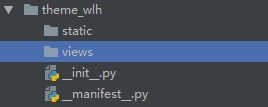

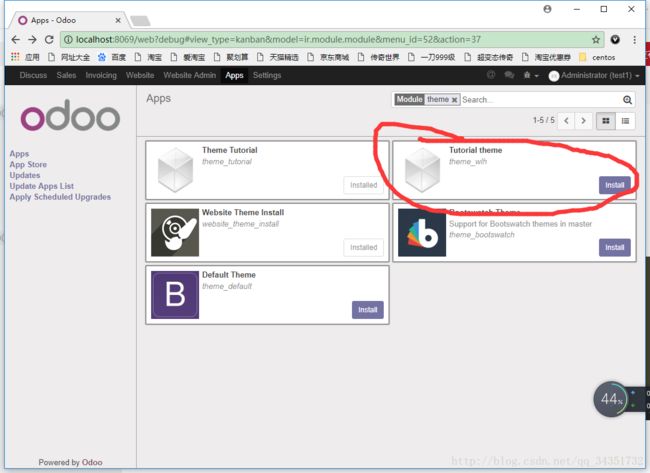
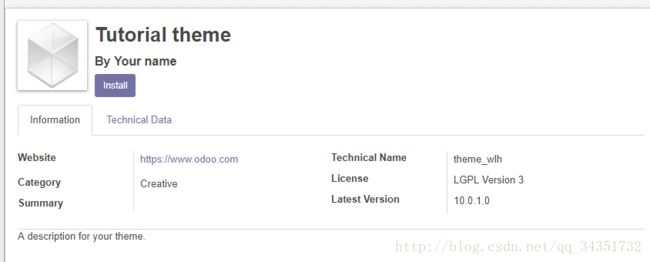
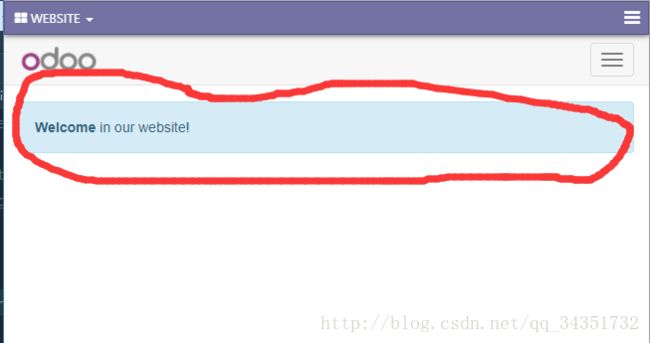

![]()

